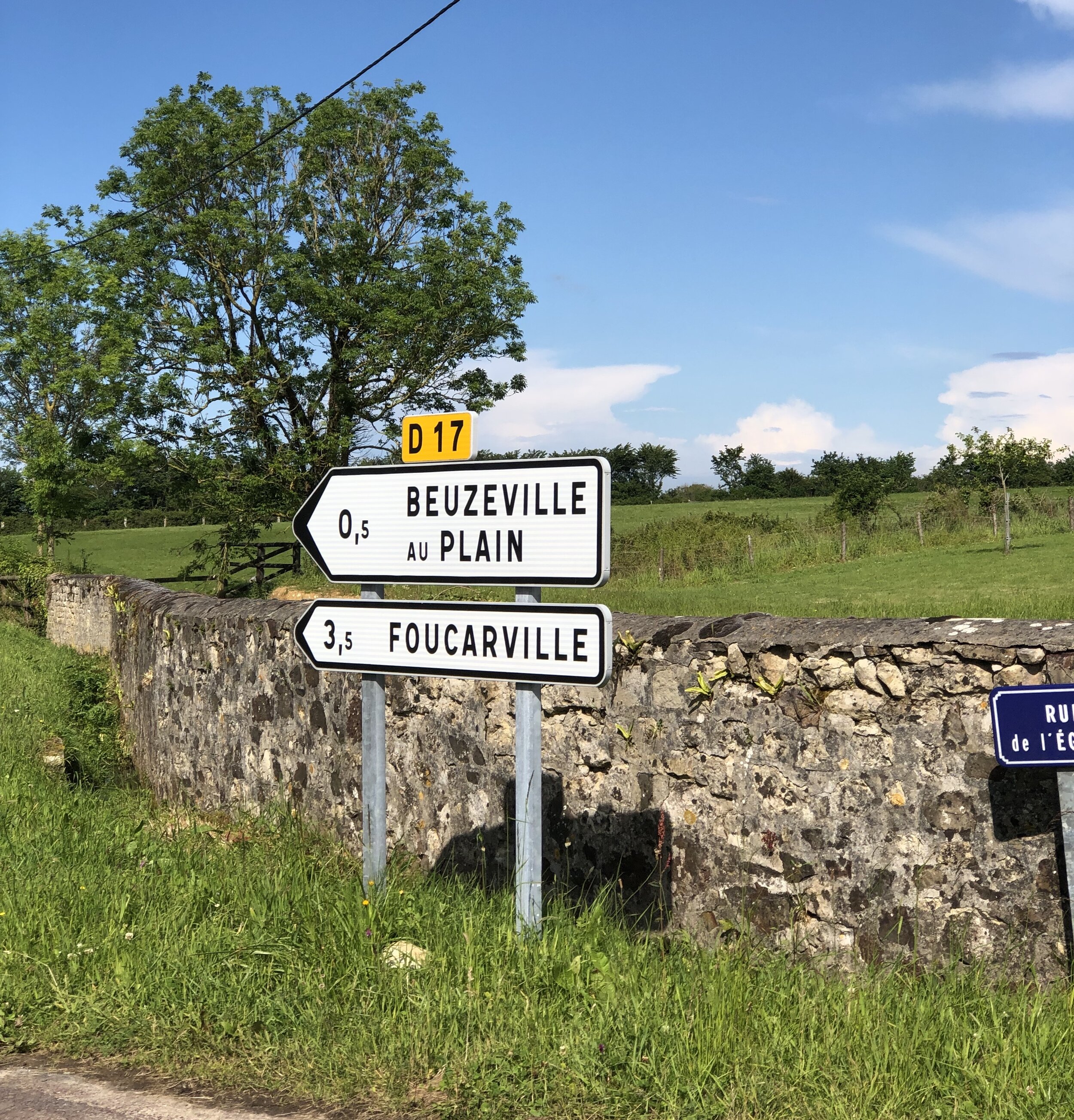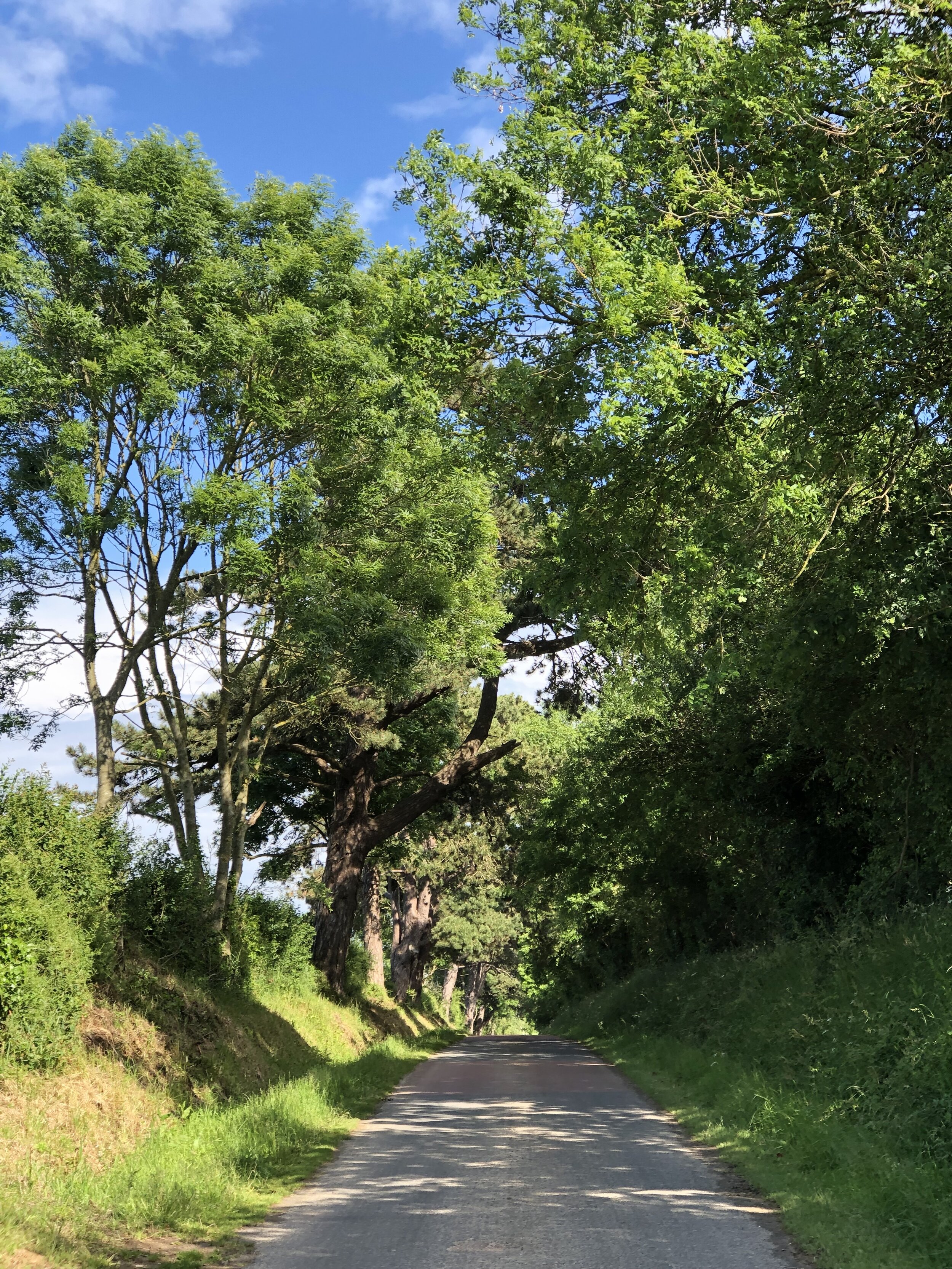Normandy - 70 years later
I visited the American cemetery in Normandy, and the “Invasion Beaches” in 2014. I was also determined to locate the 319th landing zone and the place where dad’s glider crashed on D-Day. I spent decades thinking about finding the crash site, but figured it was wishful thinking on my part. It’s hard to imagine hundreds of gliders landing simultaneously. Carrying soldiers, howitzers, and jeeps, even the chaplain glided or jumped into combat. Sounds crazy compared to today’s armed forces. But then it was the only way to insert an artillery unit behind enemy lines.
Remains of the “Hoatson” glider
D-Day glider landings
The town of Sainte-Mère-Église, located 10 miles west of Utah Beach, was a strategic mission for the 82nd Airborne in Normandy. After visiting there I drove north of the town square a few miles and came upon a four-way intersection. These are narrow country roads and visibility is not always good. Watching the cross traffic I glanced across the road and noticed a sign for “Foucarville.” It took a few seconds to register then I almost jumped out of my seat. I couldn’t believe my eyes, Oh my God, it’s Foucarville! Instantly that name rushed back into my head, the only word dad ever said about where his Horsa glider crashed. I continued straight but was surprised how quickly I was through the town. I stopped near an old church for a few moments to think about what I just saw. I then drove back into Foucarville and of the few homes in this village, spotted one displaying an 82nd Airborne flag. The owner, Veronique, was out front and quite friendly. I stopped to speak with her and within minutes it felt like we were old friends. She wouldn’t take no for an answer, so I joined her family for lunch. The experience was a bit surreal, however, I learned much of what they knew about the D-Day glider landings. Across the road lived a neighbor who was 15 years old in June 1944, and lived there his entire life. He claimed only two gliders crashed in Foucarville. The one crash site, depicted above is that of the “Hoatson,” glider, named after the pilot.
The other crash site is located on Route D115, a one-lane country road just north of “Hoatson,” close to the intersection of Route D17. A brick home was located at that intersection and occupied by a German officer according to this source. The town sign for “Foucarville,” is still posted there today.


“Hang on I’m going for the road”
I walked along the D115, a heavily wooded one-lane country road where the crash took place. I tried to visualize glider after glider attempting to land in the dark. 48 Horsa gliders of the 319th crashed into the landscape while German 88’s fired at anything that moved. It most surely was a chaotic and frightful scene. At this spot, there’s a break in the fence to a farm field and across the way, the impression of what might have appeared at night as a road to an approaching glider pilot. A strange feeling swept over me, no goose bumps or revelation, but calm. I could almost hear dad’s pilot, Lt. Winks, yelling “everybody hang on I’m going for that road.”
This was a Horsa, no ordinary glider. It had a wingspan of 88 feet. Considered a troop and cargo gliders with an overall length was 67 feet, and 20 feet high. It weighed just over 8,000 pounds empty. The maximum weight it could hold at take-off was 15,000 pounds. Gliding at 100 mph, the Horsa never had a chance. It was no match for the thick hedgerows and small landing area. The 319th’s landing on June 6, 1944, resulted in 21 men killed in action, 81 men wounded and missing.
2nd LT Ben Winks of Iowa was piloting dad’s glider that evening and was killed instantly. He is buried in the American Cemetery at Normandy. Many of the glider pilots and co-pilots were killed upon landing. Its hard to imagine crashing in any aircraft, much less a glider with a quarter ton jeep and 75mm Howitzer tumbling on top of you at 100 mph. Dad’s account of the landing was identical to the co-pilot’s after-action narrative; “Load - 1/4 ton truck, 75mm Howitzer, 5 men, Flak hit the ship but not the men. Crash landed NE of Sainte-Mère-Église. Lt. Winks killed on landing. Hit row of trees. Gun and truck smashed. Took cover down the road. German 88 fire in the field. Went to CP (command post) on Wednesday morning and were then (co-pilot) sent to the beach.”
Second Lieutenant Ben W. Winks is buried at the Normandy American Cemetery. Block D Row 14 Grave 11.
The only aircraft built to crash
The lessons learned from Mission Elmira would not be forgotten. The next glider mission (Holland) using CG-4A Waco gliders would be a daylight assault into a more suitable landing zone. Still, gliding into combat was inherently very dangerous. Years later I had the honor of meeting Sgt. Mahlon Sebring of A-Battery. He reminisced about glider combat and spoke of the 319th’s approach into Holland in a Waco glider. He watched as another glider carrying fuel exploded in mid-air and the men helplessly fell to their death. He recalled, “that was pretty scary, especially thinking that it’s your own fate in the next few seconds.”
A-Battery and 2nd Lt. Winks fate brought to mind the the following glider narrative, author unknown:
It was the only aircraft built to crash. No motor. No parachutes. No second chances. Perhaps the least-heralded and under-decorated heroes of WWII were the glider pilots. They rode through foul weather and flak, tethered to towplane pilots, to execute quasi-controlled crash-landings on rocky slopes or among hedgerows and vineyards-frequently in darkness and behind enemy lines-to deliver troops, weapons, and vital supplies. Carrying loads equal to their own weight, the fragile fabric-and-plywood CG-4A Waco gliders led airborne assaults at Sicily, Burma, Normandy, southern France, Holland, across the Rhine, and the Philippines. Casualties were almost always high in these do-or-die circumstances, and once on the ground the pilots often guarded prisoners, directed traffic, or became foxhole soldiers, for which they were little-trained. These recklessly brave volunteers, who called themselves the “towed-target” infantry, were the most uninhibited individualists in the Army. Centered in the silver wings they wore was a large ‘G,’ which they would proudly boast, stands for guts!



